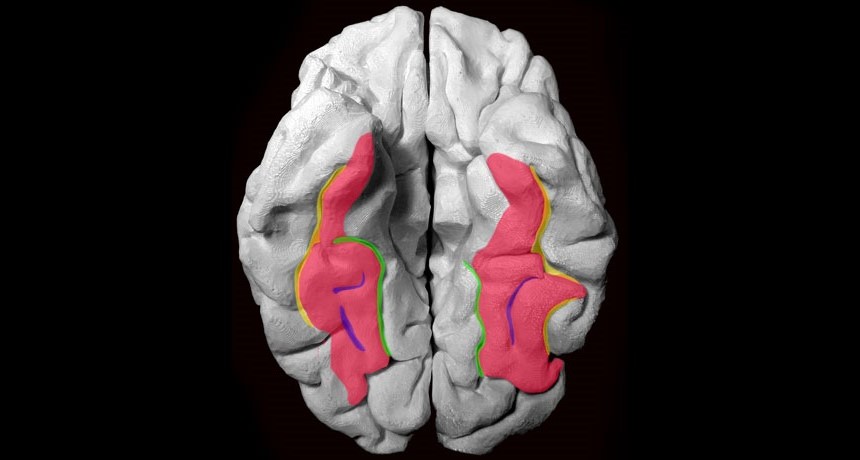Facial-processing area of brain keeps growing throughout childhood

A part of the brain that’s responsible for recognizing faces seems to grow new tissue throughout childhood. That’s surprising, because brain development during childhood usually involves pruning back neural connections rather than growing new ones, researchers report in the Jan. 6 Science.
The research shows that “pruning isn’t the only game in town,” says Brad Duchaine, a psychologist at Dartmouth College who wasn’t part of the study. “I’m really excited about it.”
Researchers used magnetic resonance imaging, or MRI, to identify regions of the brain’s visual cortex that showed more activity when processing faces versus regions that lit up when processing photos of places like cityscapes or hallways. Then the scientists compared the structures of those regions in 22 kids’ brains (ages 5 to 12) with those of 25 young adults (ages 22 to 28).
The place-sensitive area — the collateral sulcus — didn’t change dramatically between childhood and adulthood. But face-sensitive areas in a region called the fusiform gyrus did.
Adults had denser fusiform gyrus brain tissue than kids and that tissue contained a different composition of cells and proteins, the researchers found.
MRI scans alone can’t reveal exactly what types of cells and structures are behind the increased tissue seen in adults’ fusiform gyrus. But evidence from previous studies suggests that the effect might come in part from increases in dendrites — the fingerlike projections of nerve cells that receive messages from other nerve cells. Dendrites might branch out more, making more connections. Another culprit might be the oligodendrocytes, brain cells that produce nerve cells’ insulating myelin coating. The actual number of nerve cells isn’t increasing, though, says Jesse Gomez, a neuroscientist at the Stanford University School of Medicine who led the study.
The visual cortex contains regions specific to processing many different types of visual stimuli — faces and places but also movement and colors. Since this study compared only facial processing and location processing, it’s not clear yet whether the increase in brain tissue is really limited to facial recognition areas, Duchaine says. But the finding does show that the brain circuits behind different types of visual processing don’t all develop in the same way.
Humans take longer to develop facial recognition skills than other types of visual processing, which could help explain the effect, the researchers propose.
“Throughout development, our social circle grows,” Gomez says. “That might be one reason why the region continues to grow — that piece of hardware in the brain itself just takes time to develop.” The current data can’t pin down the age cutoff for tissue growth, but Gomez and his colleagues are following their subjects over time to try to figure that out.
The team thinks similar tissue growth might occur in other parts of the visual cortex, too. In future studies, they hope to investigate the development of these other specialized regions.